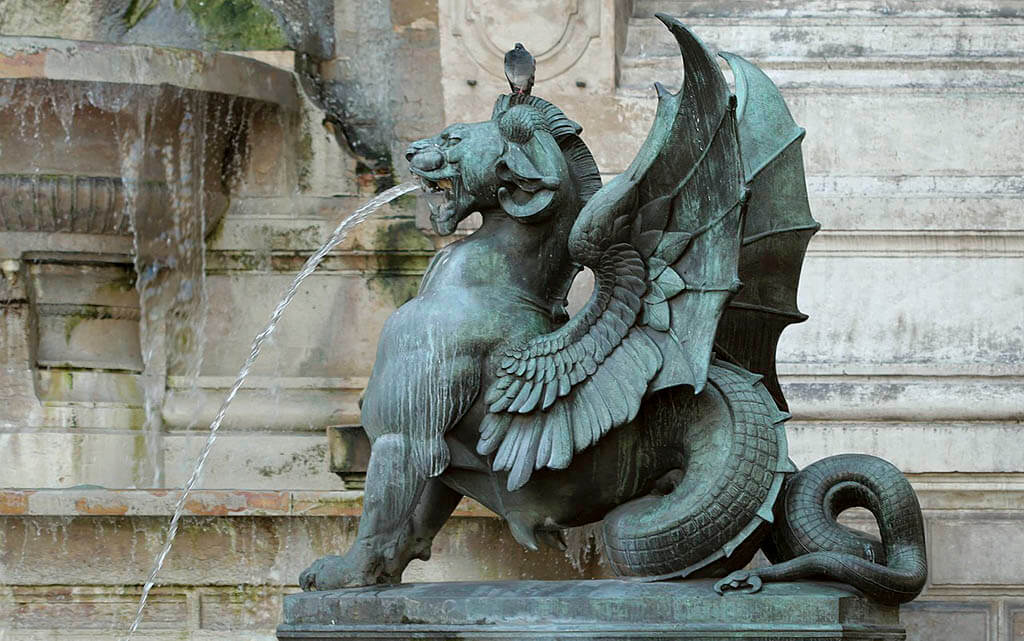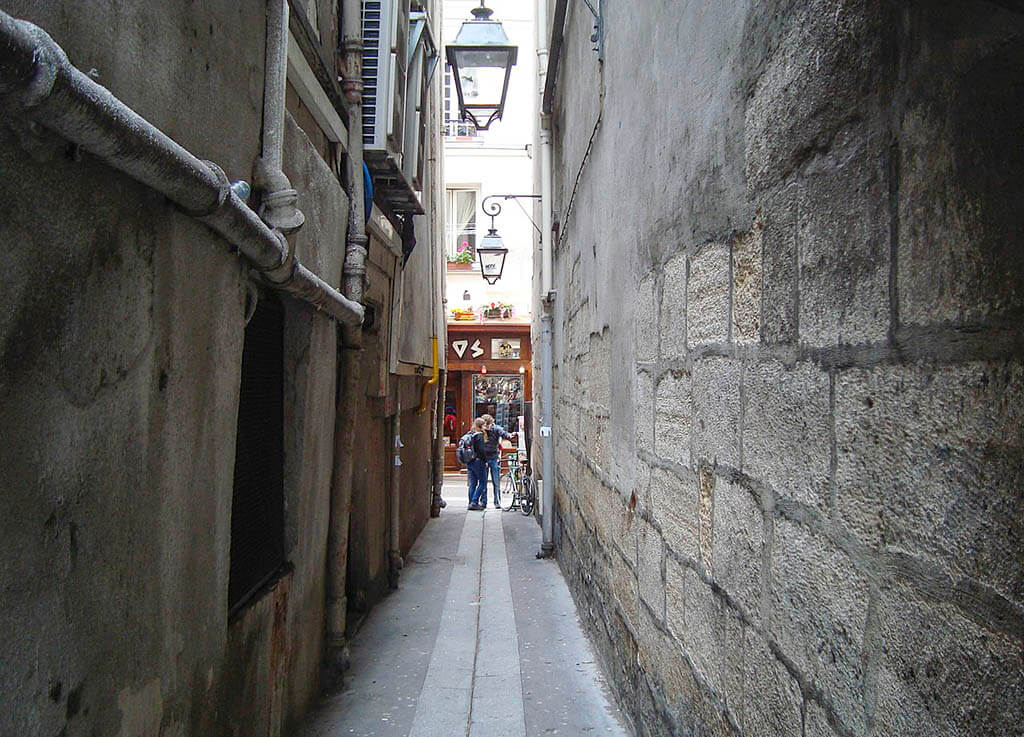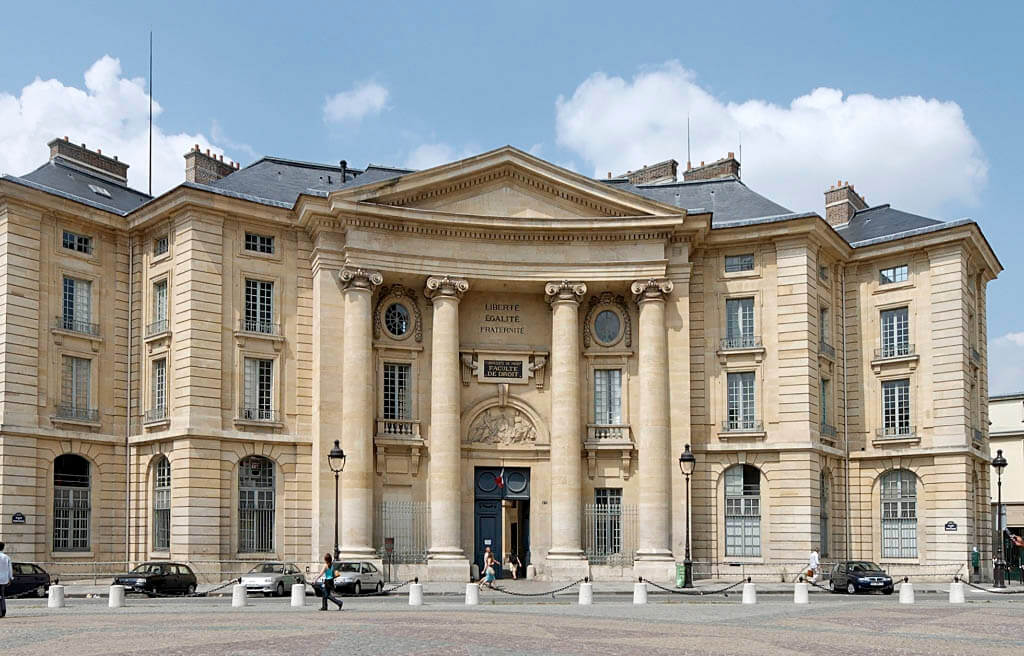The Latin quarter of Paris (Quartier Latin) is not just a point on the city map. This is one of the oldest areas of Paris with an astonishing color of narrow streets, cozy cafes and bookstores, a great place for historical excursions and a relaxed promenade among sights. In addition, the Latin Quarter is the vibrant hub of students and youth, because the world-famous Sorbonne and other parts of the University of Paris are located here.
We recommend starting to learn more than two thousand-year history of Paris with the audio guide «Historical Paris» (you can download it here). And in order to study every curious noot in the most detail as possible, you can call our best guides. Or use this ready-made route to take a walk in solitude. The path will take from one and a half to two hours. Put on comfortable shoes and let’s go!
Getting to the Latin Quarter
The easiest and cheapest way is to take the subway. You need the Saint-Michel station. The 4th line or the RER train, line C, will take you to the desired stop.
You can also take the RER B, get off at Saint-Michel Notre-Dame. Following the signs, you will easily reach Place Saint-Michel. Our hiking route through the Latin Quarter begins exactly here.
By the way, staying in the Latin Quarter is also a great idea! The area is so good that the hotel level here is slightly above average.
Compare hotel deals in Latin QuarterPlace Saint-Michel
Start your walk from Place Saint-Michel. It is named after the Archangel Michael. You will find him right there, in the center of the sculptural composition, fighting the Devil. This is not just a sculpture, but a whole fountain designed by the architect Gabriel Daviou and built in 1860. Since 1926, the Fountain Saint-Michel has been recognized as a historical monument.
Check out the layout. The fountain does not stand in the center of the square, but closes the end of the building, from which two boulevards start. This is the idea of Baron Haussmann, the one who was in charge of the redevelopment of Paris in the 19th century and cut through the Champs Elysees.
Turn your back on the fountain and see the Seine and the Ile de la Cité. The nearest bridge also bears the name of Saint-Michel.
» READ MORE – Paris in one day: route and map
Boulevard Saint-Michel
Among the locals, the boulevard bears the funny nickname Bulmish (Boul’Mich’). You can walk to the Luxembourg Gardens along it.
Bulmisch owes his appearance to the already mentioned Baron Haussmann. It happened in 1867. And already in 1968, the famous student disorder took place on the boulevard, remembered for violent clashes with the police.
Today, Bulmish pleases pedestrians with the opportunity to meet colorful second-hand booksellers, from whom you can buy a lot of interesting toms. Also there are a lot of bookstores here, since there are many students around.
» READ MORE – 5 Places to Avoid Staying as a Tourist in Paris
Rue de la Huchette
From Place Saint-Michel, the Rue de la Huchet runs parallel to the Seine. It is considered one of the oldest in Paris. The first mentions date back to the end of the 13th century. Here you can easily immerse yourself into the atmosphere of the Middle Ages, when the streets were very narrow. The maximum width of the street does not exceed 10 meters, and the length is only 164 meters.
Look at house number 8. It was built in 1494. And in the neighboring house 10, they say, Napoleon lived before he became a commander and emperor.
House 5 maintains the famous club Caveau de la Huchette. Founded in 1946, the club is considered the first institution in Paris where jazz improvisations appeared.
» READ MORE – First Time in Paris: planning your ideal trip
Rue du Chat-qui-Pêche
Near house number 5 along the rue de la Huchet follow the alley and you will find yourself on the amazing street du Chat-qui-Pech. Its whimsical name translates as «street of the fishing cat».
This street is known as the narrowest in Paris, it’s only 1.8m wide. And the length is tiny, just 29 meters. In addition, the street is one of the oldest in the city and has existed since 1540. At that time there was a staircase that descended directly to the Seine.
So where did such a strange name come from?
Version one, mystical
There once lived a clergyman on this street in the 15th century. He had a black cat that could catch fish right out of the river.
The cat catches fish by itself, how can it be possible? Apparently, it is the devil-worshiping priest who turns into a cat! Three students decided to check it out and threw the cat into the Seine. The cat was gone and, oddly enough, the priest too. But very soon he came from a neighboring village. The fluffy fisher also soon returned and continued to feast on fish from the Seine. Devilry, and that’s all.
Version two, linguistic
One clever shopkeeper kept his shop here. In French, the expression chat qui pêche («the cat that catches fish») is pronounced the same as chaque y pêche («everyone here will catch something»). This is such a play on words. A cat-fisherman looked at the visitors from the signboard.
The Church of Saint-Séverin
At the end of rue de la Huchet, turn right onto rue du Petit-Pont. Walk a little forward and you will see the church of St. Severin.
Initially, there was a chapel erected over the grave of the 6th-century hermit Saint Severin on the site of the church. In the 13th century, a temple was built instead of a chapel. And in 1448 the church got its actual form in «flaming Gothic» style.
Specific features of this trend in architecture are lancet windows, patterns or ornaments in the form of flames. Take a look at the semi-rosette on the main facade, at the predatory gargoyles. Inside, behind the church altar, you will see 10 columns that look like palm trunks with spreading branches.
Make sure to pay attention to the remains of the Last Judgment fresco painting. Among the colorful stained-glass windows of the temple there are works of the 15th century and 1970. The attraction of the church is the oldest of the Parisian bells of 1412.
The southern part of the church land was used as a cemetery in the 13th century. Since there was little space and many burials, the old remains were removed, cleaned and stored in the gallery premises. There is even an ossuary preserved now.
» READ MORE – What to see in Paris while Notre-Dame is under restoration
Church of Saint-Julien-le-Pauvre
Cross the rue Saint-Jacques and in the back of the block you will see another church, Saint-Julien-le-Pauvre. This is a Greek Catholic parish, one of the oldest and smallest churches in Paris.
A temple was on this site as early as the 6th century AD. Tourists are impressed by the preserved remains of the Roman road slabs near the walls of the church and the ancient well. The current building of Saint-Julien-le-Pauvre was built in several stages from the 12th to the 19th century.
The temple is named after Bishop Julian of Le Mans, known for his selfless service to others. Thomas Aquinas preached within these walls.
The interior decoration of the temple will also enchant visitors. You definitely should visit it to appreciate the magnificent stone carvings, the iconostasis in the usual Byzantine style. Here is link to guided tour.
National Museum of the Middle Ages and the Thermes de Cluny
The Thermes de Cluny are nothing more than the remains of an ancient Roman bath complex. Quite a decent foundation for a medieval museum, isn’t it?
The basis of the collection was the 15th century mansion, which belonged to the Benedictine order of Cluny. The surviving household items were supplemented by a private collection bought by the state. This is the most significant collection of things from that era in the world.
Among the curious exhibits of the museum, pay attention to 28 original statues from the Cathedral of Notre Dame de Paris. They were removed and beheaded during the French Revolution. So there are copies in the cathedral now.
Tapestries, stained glass, woodwork and ivory, all are carefully stored in this unique museum.
Skip-the-line Paris Museums pass at this link.
» READ MORE – Paris museums you have to see
Sorbonne
Cross Place Paul Painlevé and you will find yourself in front of the main entrance to the Sorbonne. The building on Ekol Street is recognized as a historical monument. Tourists are allowed to see the courtyard of the university and its buildings. Only students can enter the Sorbonne further.
Make sure to check out the facade from Rue Saint-Jacques. Here you can see the names of the disciplines above the windows. The Sorbonne was started as a theological college, but became a famous liberal arts school, part of the University of Paris. You can visit the Sorbonne with a guided tour (book a tour now).
Sorbonne chapel
The colorful baroque façade on the Place de la Sorbonne is the chapel of St. Ursula. It was built in 1642, when Cardinal Richelieu was building the Sorbonne. And there he was buried inside.
The decoration of the building is its dome. The magnificent symmetry of the church is emphasized by the columned porticos and pediments. In 1905, the building was adapted for receptions and exhibitions. This was influenced by the law that separated religion from the state.
Pantheon
The last in order, but the first in grandeur on our route will be the Pantheon. Its grandiose appearance instantly attracts the attention of tourists. The once former temple of Saint Genevieve is now a mausoleum in which the great French are buried: Voltaire, Alexandre Dumas (father), Victor Hugo and many others.
» READ MORE – Paris Pantheon
For its intended purpose, that is, as a temple, the Pantheon wasn’t generally used much. In 1851, they even conducted a scientific experiment there. The physicist Léon Foucault built a huge pendulum that proved that the Earth does indeed rotate. Numerous onlookers flocked to watch the experiment. Get your skip-the-line ticket to the Pantheon here.
We hope you enjoy our itinerary! Walk around these places and feel the living history of Paris.
Have a nice walk!












 Udo / Pixabay
Udo / Pixabay  Max van den Oetelaar / Unsplash
Max van den Oetelaar / Unsplash  Emily Fletke / Unsplash
Emily Fletke / Unsplash  Pixabay
Pixabay 

 CC0 Public Domain
CC0 Public Domain Shinnosuke Ando / unsplash.com
Shinnosuke Ando / unsplash.com
Leave a Reply
Want to join the discussion?Feel free to contribute!